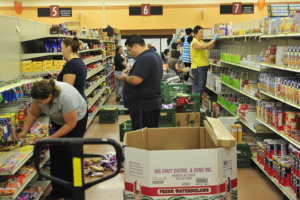How to leverage consumer behavior data?

Data has become one of the greatest weapons in the retail industry. Knowing who’s your target, what do they like, and how do they behave and react towards your product can give you a significant advantage. However, it’s also true that the retail industry has some really harsh competition, which means your competition probably has the same information as you, if not more.
So, how can you get some leverage from consumer behavior data in such a competitive landscape, especially if you’re not a data analysis expert or an IT geek? Here we’ll give you some tips to take advantage of consumer behavior data.
First things first, what’s consumer behavior, and why is it so important?
Consumer behavior studies consumers and their process of selecting, using, and disposing of products and services. It includes the study of all consumers’ responses: on their behavior and on an emotional and mental level.
Why is it so important? Because it allows businesses to understand why a consumer picks one brand or one product over another. It lets you know the rationale that makes someone select your brand and if they are reacting and using your product the way you intended to.
When you understand the thought process of your potential consumers. It will help you know how they feel about the alternatives in the market, how they research and shop, how their environment shapes their behavior and decisions, and what makes them choose one option over another. All this helps you reach your clients in a better way.

Now, the tips
So, knowing it’s vital to collect consumer data, what can you do to leverage it? There are many ways.
- Improve your store layout: Don’t limit your data to e-commerce. If you have a physical store, tracking technology can help you understand how people move in it. What do they look for? Is it easy to find? It can also help you to stock your shelves in a better way. When you know what are people looking for, you can re-arrange your shelves to attract attention to those products putting them on the paths consumers’ pass through the most.
- Use shopping behavior in your favor: Heat maps can help you see where people are going. Some routes may set up alarms letting your crew know when a customer is having trouble finding something (walking all around the place but continuing to be empty-handed is a good indicator).
- Boost the supply chain: A common issue may be that customers can’t find a product on the shelves, but you have some more on the warehouse. The customer doesn’t ask about the product and assumes you don’t have it. Then he goes to the next door store and buys it. And that’s how you lose a client. POS data can help you know what’s being sold at every time and can help you activate automatic restock alerts to avoid such issues.
All these are creative ways to use consumer behavior data to improve your customers’ experience and to boost sales and the efficiency of your team. That’s good for clients, for employees, and for the business. It will help you make better business decisions that are beneficial for all. When you can anticipate a customer’s mindset and needs, you will increase sales and overall satisfaction, which leads to happy customers and a healthy business.